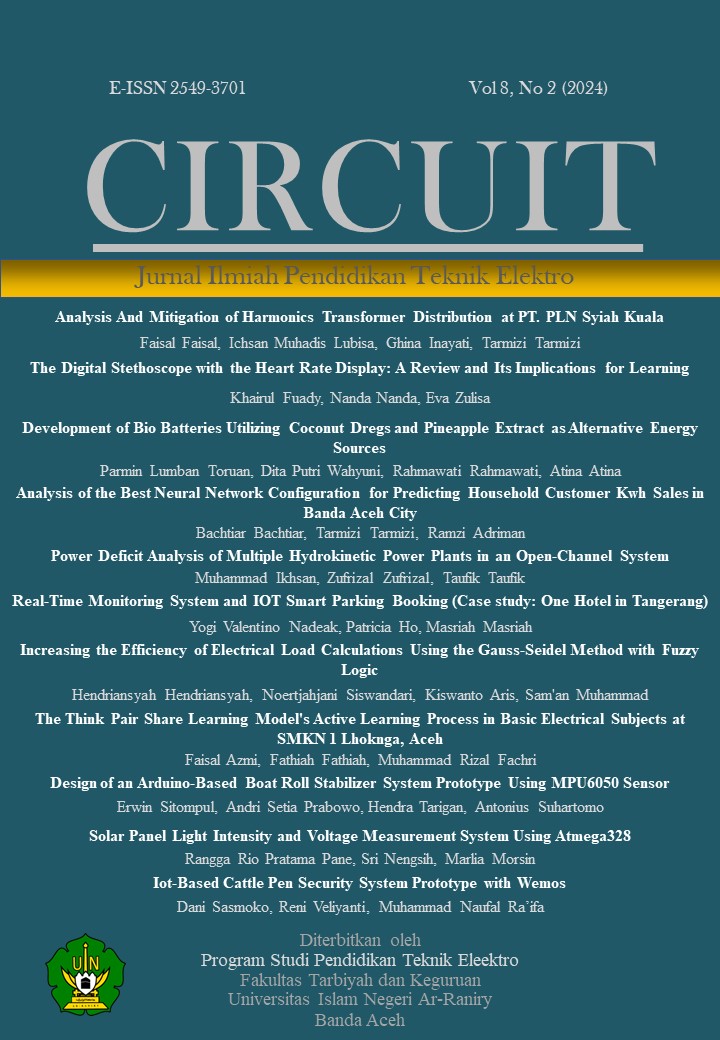Real-Time Monitoring System and IOT Smart Parking Booking (Case study: One Hotel in Tangerang)
DOI:
https://doi.org/10.22373/crc.v8i2.18020Keywords:
Smart Parking, Monitoring, MQTTAbstract
Since cars and motorbikes are the most popular personal mobility, public spaces must always provide enough parking for every visitor. However, occasionally there are more parking spaces available than there are guests, which makes it difficult for visitors to find an empty spot and takes a while. It can be found in the case study conducted in a hotel in Tangerang. This case study informs the development of an Internet of Things (IoT) smart parking system that uses Wi-Fi and the MQTT communication protocol to monitor user behavior, identify available parking spaces, and recognize vehicle entry. The ESP8266 microcontroller serves as the sensor node. Other sensors that are used include the RFID RC-522 sensor to determine how long a car user has been in the area, the Servo SG92R infrared (IR) sensor to detect the presence of a vehicle, and the HC-SR04 ultrasonic sensor to detect parking spaces. The outcomes showed that the Thingsboard platform's monitoring capability and the ability to reserve particular parking spaces using an MIT App Inventor app proved the smart parking system's successful implementation.
Downloads
Published
Issue
Section
License
Authors who publish in CIRCUIT: Jurnal Ilmiah Pendidikan Teknik Elektro agree to the following terms:
- Authors retain copyright and grant the journal right of first publication with the work licensed under a Creative Commons Attribution-ShareAlike 4.0 International License (CC BY-SA 4.0) that allows others to share and adapt the work with an acknowledgement of the authorship and initial publication in this journal
- Authors are able to enter into separate, additional contractual arrangements for the non-exclusive distribution of the journal's published version of the work (e.g., post it to an institutional repository or publish it in a book), with an acknowledgment of its initial publication in this journal.
- Authors are permitted and encouraged to post their work online (e.g., in institutional repositories or on their website) prior to and during the submission process, as it can lead to productive exchanges, as well as earlier and greater citation of published work. (See The Effect of Open Acces)

